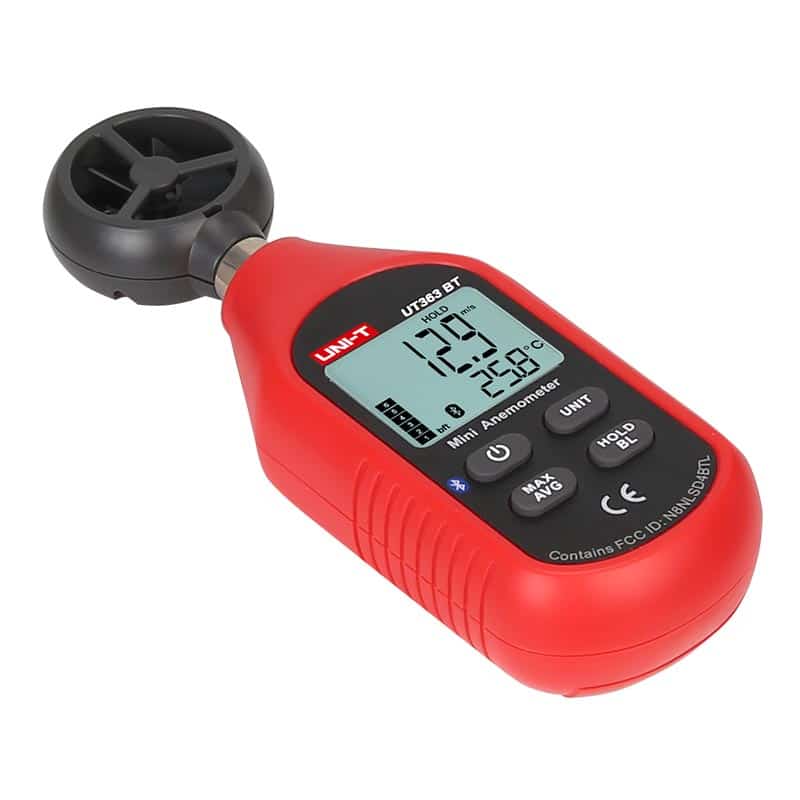All You Required to Understand About Anemometers: How They Function, Why They Issue, and Where to Make use of Them
Anemometers, though often forgotten in the realm of scientific tools, play a vital duty in different fields, supplying useful insights right into wind rate and air flow patterns. Comprehending the mechanics behind these tools is vital for anyone looking for to harness the power of this data. From meteorologists tracking weather condition patterns to engineers developing frameworks with wind tons in mind, the applications of anemometers are varied and far-reaching. As we look into the complexities of anemometer technology, we will certainly uncover the inner functions of these devices, their relevance, and the essential factors to consider when picking the ideal anemometer for certain applications.

Anemometer Essentials
An important instrument utilized to gauge wind speed and instructions, the anemometer plays a vital role in meteorology and different markets. An anemometer usually includes three or four mugs that revolve in the wind, a vane that directs right into the wind, and sensing units to track the turnings or activities. By determining the rotations or activities over a specific amount of time, the anemometer can determine wind rate. The vane assists establish wind direction by directing into the wind, supplying beneficial information for weather projecting, aeronautics, maritime procedures, environmental surveillance, and wind power applications.
There are numerous types of anemometers readily available, including cup anemometers, vane anemometers, hot-wire anemometers, and sonic anemometers, each with its unique attributes and applications. Cup anemometers are generally made use of for standard wind speed measurements, while vane anemometers are favored for directional measurements. Hot-wire anemometers are appropriate for reduced airspeeds, and sonic anemometers are excellent for high-precision measurements in research and industrial setups. Comprehending the essentials of anemometers is vital for exact wind information collection and analysis across various sectors.
Principles of Anemometer Procedure
Building on the foundational understanding of anemometer basics, the concepts of anemometer operation illuminate the auto mechanics behind wind rate and instructions measurements. Mug anemometers, for circumstances, have three or even more cups that record the wind, triggering them to spin much faster as the wind speed increases. Hot-wire anemometers rely on a heated cord that cools down as wind passes over it, with the rate of cooling down determining the wind speed.
Value of Anemometers
Anemometers play a critical duty in gauging wind speed and direction, supplying vital information for weather read here forecasting, climate research studies, ecological tracking, and aeronautics procedures. Meteorologists count on anemometers to collect precise wind data, assisting them comprehend weather condition patterns, predict tornados, and concern prompt cautions to the public. Wind farm drivers make use of anemometers to examine wind problems and optimize electrical power production from wind turbines.
Applications Throughout Various Industries
In the renewable energy sector, anemometers play a critical role in evaluating wind conditions for wind farm placements, ensuring ideal power production. Industries like building and construction and check these guys out mining use anemometers to keep an eye on wind rates, critical for security methods, specifically when functioning at heights or in open-pit mines where strong winds can posture hazards. In farming, anemometers assist farmers in managing crop splashing by offering real-time data on wind speed to avoid drift.

Picking the Right Anemometer for Your Needs
For general functions, a cup anemometer is suitable for gauging wind rate, while a vane anemometer provides wind instructions information. Hot-wire anemometers are suitable for low airspeed measurements, and ultrasonic anemometers offer high accuracy and durability.

Conclusion
In conclusion, anemometers play an essential duty in determining wind speed and direction throughout various markets. Comprehending the concepts of anemometer operation is important for choosing the ideal gadget for specific needs. From weather forecasting to air travel, anemometers are vital devices for gathering precise information and making sure safety and security in different applications. It is important to think about the relevance of anemometers in order to make educated choices when choosing one of the most suitable tool for gauging wind conditions.
There are numerous kinds of anemometers offered, including cup anemometers, vane anemometers, hot-wire anemometers, and sonic anemometers, each with its special attributes and applications. Cup anemometers are generally utilized for standard wind rate dimensions, while vane anemometers are preferred for directional measurements. Hot-wire anemometers are suitable for low airspeeds, and sonic anemometers are suitable for high-precision dimensions visit this web-site in study and industrial setups.Structure on the fundamental understanding of anemometer essentials, the concepts of anemometer procedure illuminate the technicians behind wind rate and instructions dimensions. For general objectives, a mug anemometer is ideal for measuring wind speed, while a vane anemometer offers wind instructions information.
Comments on “Anemometer Innovations: The Latest Innovation for Wind Rate Measurement”